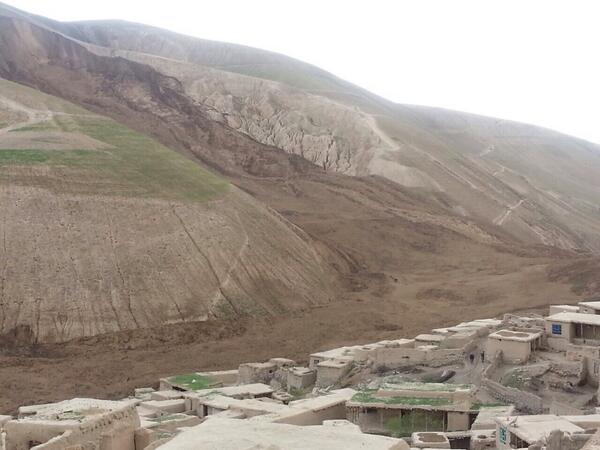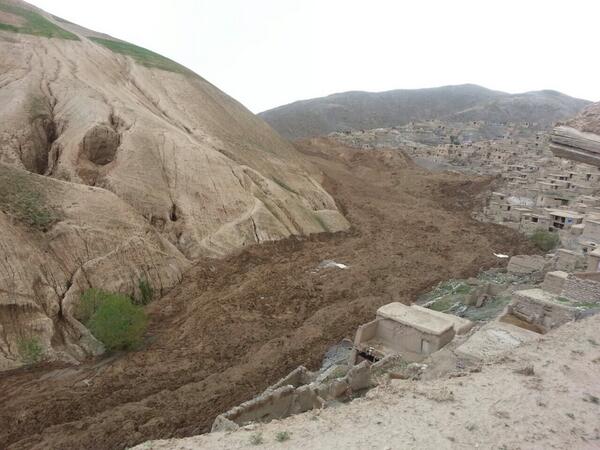3 May 2014
Badakhshan landslide in Afghanistan – a loess failure?
Posted by Dave Petley
Badakhshan landslide
The tragic landslide in Argo District of Badakhshan Province, NE Afghanistan yesterday is now believed to have killed at least 350 people, making it the worst landslide of 2014 to date. The best coverage has come from the Twitter account of a BBC correspondent, Bilal Sarwary, who has tweeted a number of images of the slide and the village. These are the best two to date, showing first the Badakhshan landslide itself:
..
And second, the mobility of the landslide debris:
..
The landslide came after prolonged heavy rainfall in the region. Unfortunately, the middle of the day on a Friday is a time when many people are likely to be at home. Bilal Sarwary reports that at the time of the landslide there was a wedding party. The slide occurred in two phases, with an initial slide that buried many people. In the aftermath, many people from local villages went to help, only to be buried by the second landslide. The prospect of finding survivors seems very low.
Was the Badakhshan landslide a loess failure?
The fine-grained texture of the landslide (note the lack of obvious boulders) and the high mobility of the landslide suggests to me that this was a loess landslide. Shroder et al. (2011) identified 34 large loess landslides in this area of Afghanistan, with saturation and liquefaction being a common cause. They also noted that farming practices, and in particular irrigation, can increase the likelihood of landslides in these materials. I have reported on loess landslides previously, most often in China, such as this example from Shaanxi in 2009. and this smaller earthquake induced event from Gansu.
Reference
Shroder, J.F., Schettler, M.J. and Weihs, B.J. 2011. Loess failure in northeast Afghanistan. Physics and Chemistry of the Earth, Parts A/B/C, 36 (16), 1287–1293.




 Dave Petley is the Vice-Chancellor of the University of Hull in the United Kingdom. His blog provides commentary and analysis of landslide events occurring worldwide, including the landslides themselves, latest research, and conferences and meetings.
Dave Petley is the Vice-Chancellor of the University of Hull in the United Kingdom. His blog provides commentary and analysis of landslide events occurring worldwide, including the landslides themselves, latest research, and conferences and meetings.
want learn more about landslide